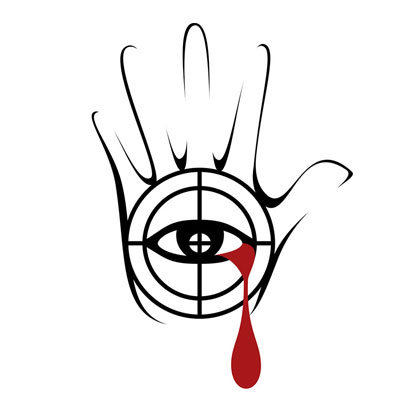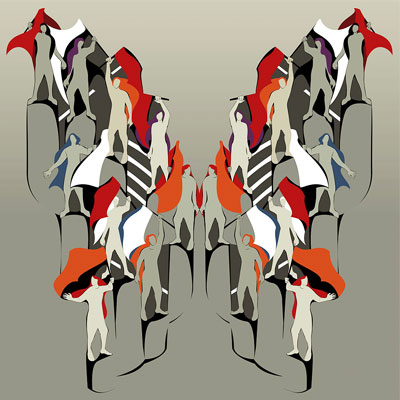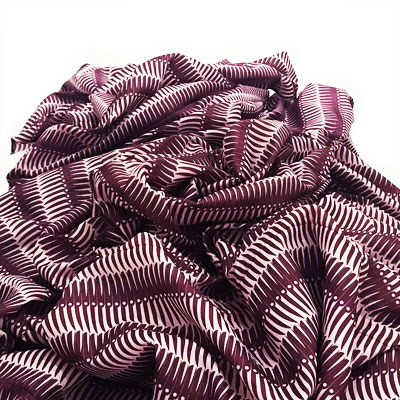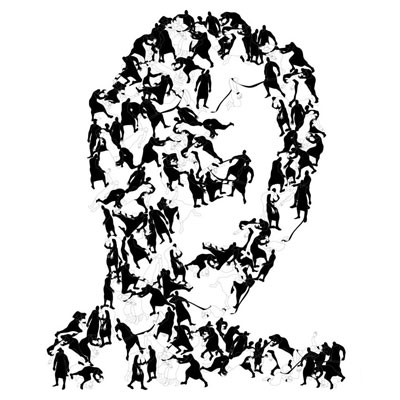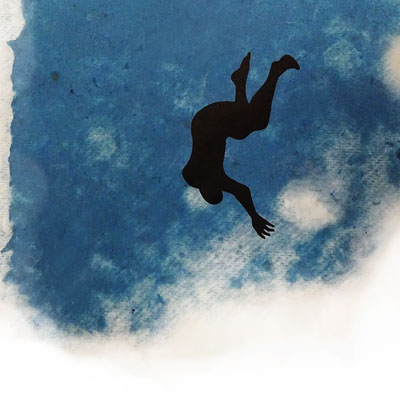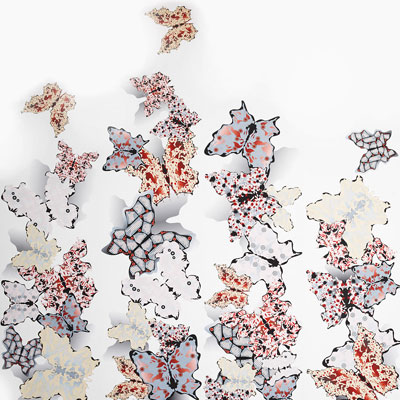The Persian script is turned into an ornament. Covering the white walls of the museums, the characters serve Forouhar as “paper” for her own text. The room becomes a “written room”. Whereas the white walls of the gallery room are raised to a universal norm and an unmarked instance, the Oriental ornament stands for difference or the deviating.
The writing is also strange, if not alien, because it is illegible for Western visitors – as an “incomprehensible” text it becomes a pure ornament. In defying attempts by Western visitors to assign its meaning, the script remains locked into its irreducible pictorial graphicness and indissoluble representation. The meaning cannot be grasped; at best, the inscribed ping-pong balls, which cover the base of the installation, can be grasped in the tactual sense. The legibility is made even more difficult by the movement of the ping-pong balls, which due to their spherical form also offer no stable vertical or horizontal reading axes; they form new patterns over and over again, are always in motion, and become incoherently disjointed.
Even if one has a command of Persian, the characters prove to be nothing more than word fragments and syllables, which are not subject to a linear order. The script ornamentation covers the whole room. Viewers entering the rooms are surrounded by patterns, forcing them to give up their sovereign, distanced standpoint. Alexandra Karentzos
Written Room, since 1995
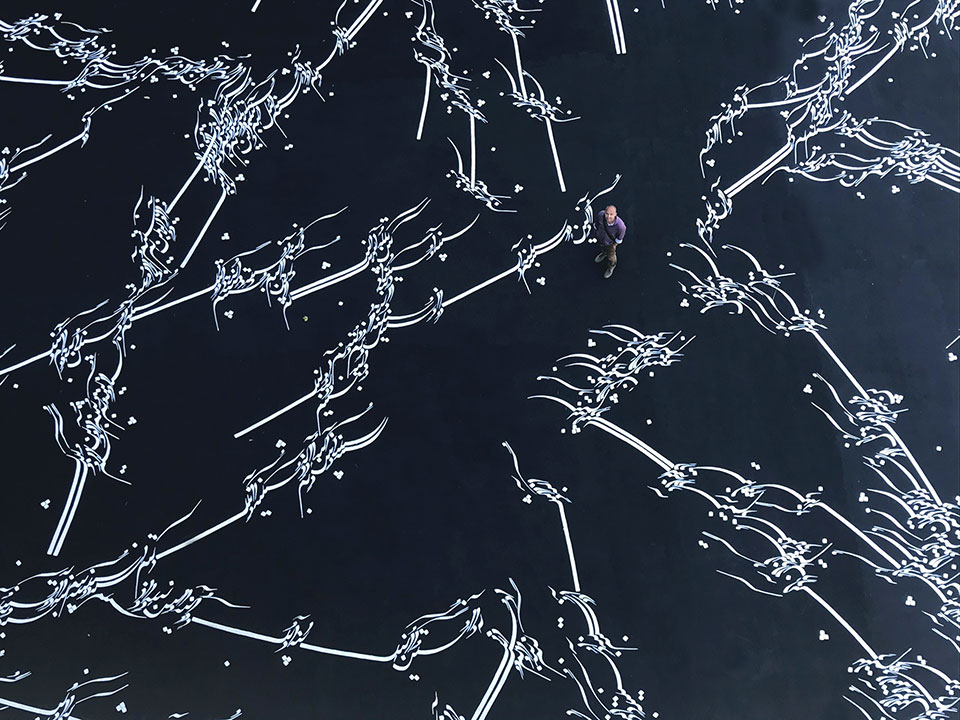
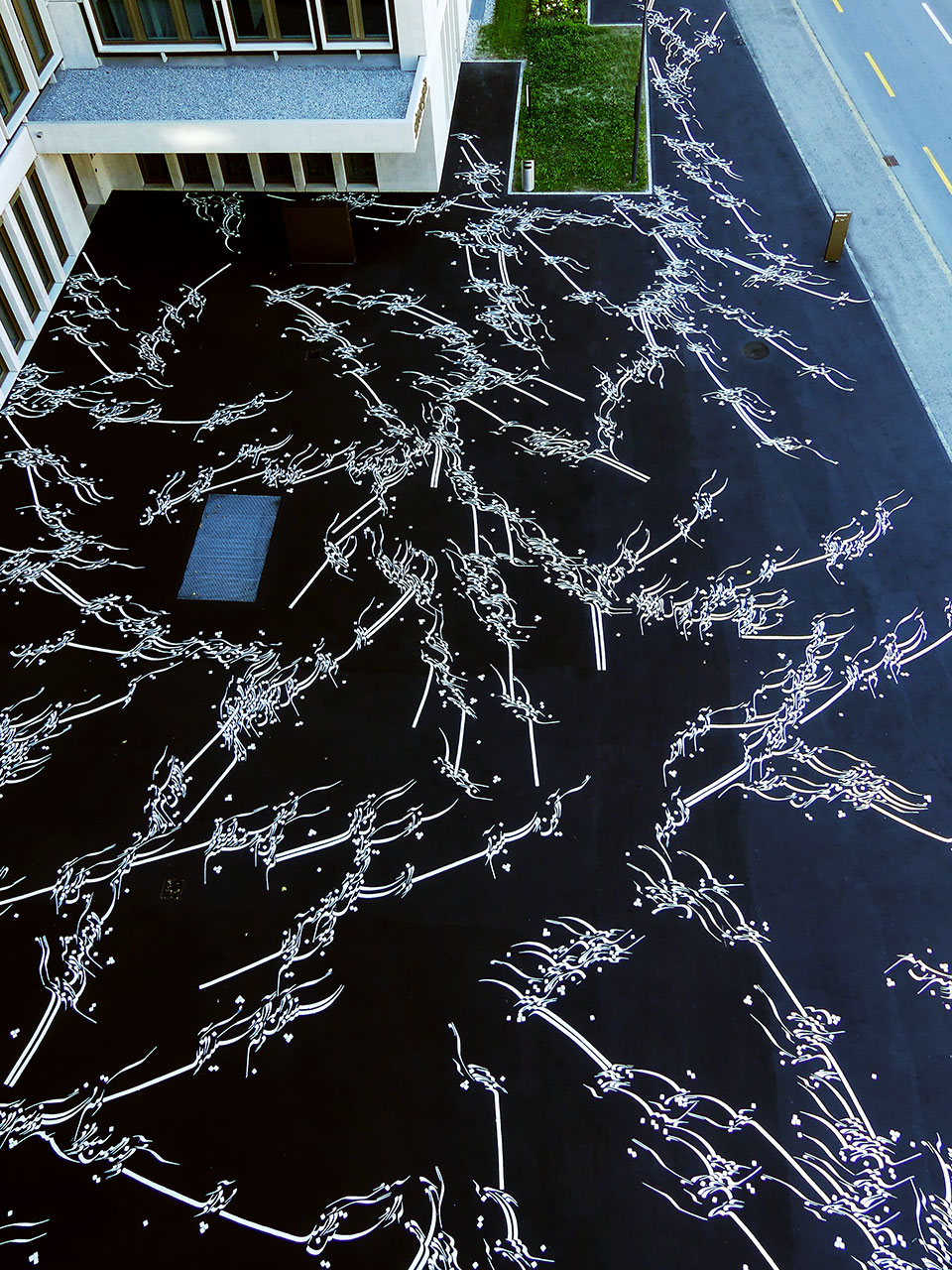
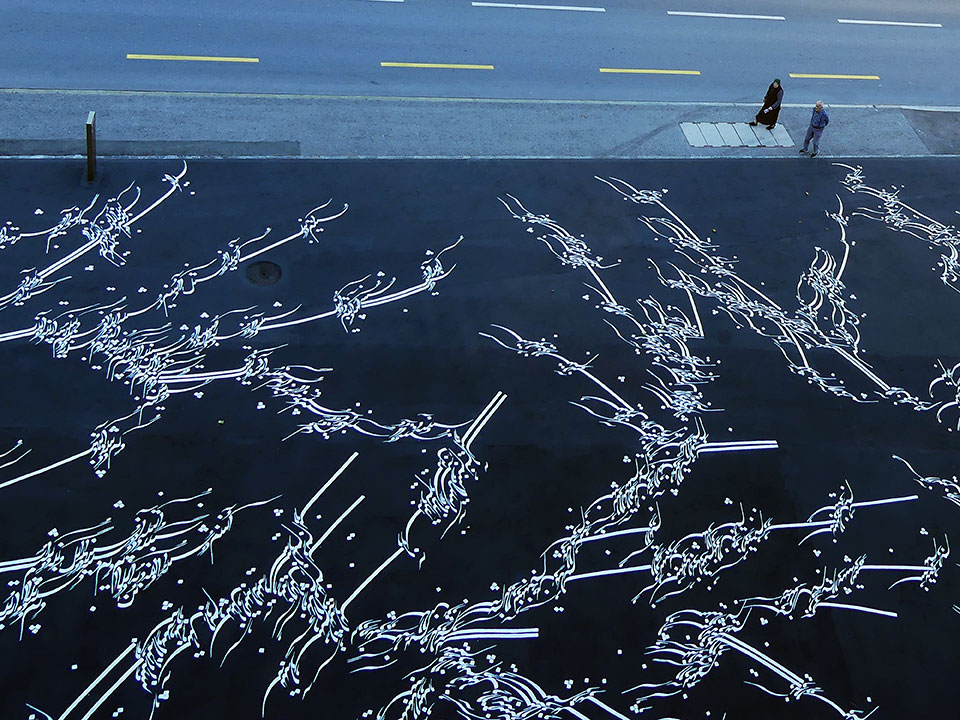
Forecourt of the administration center of the canton Graubünden in west Chur, Swiss, 2020
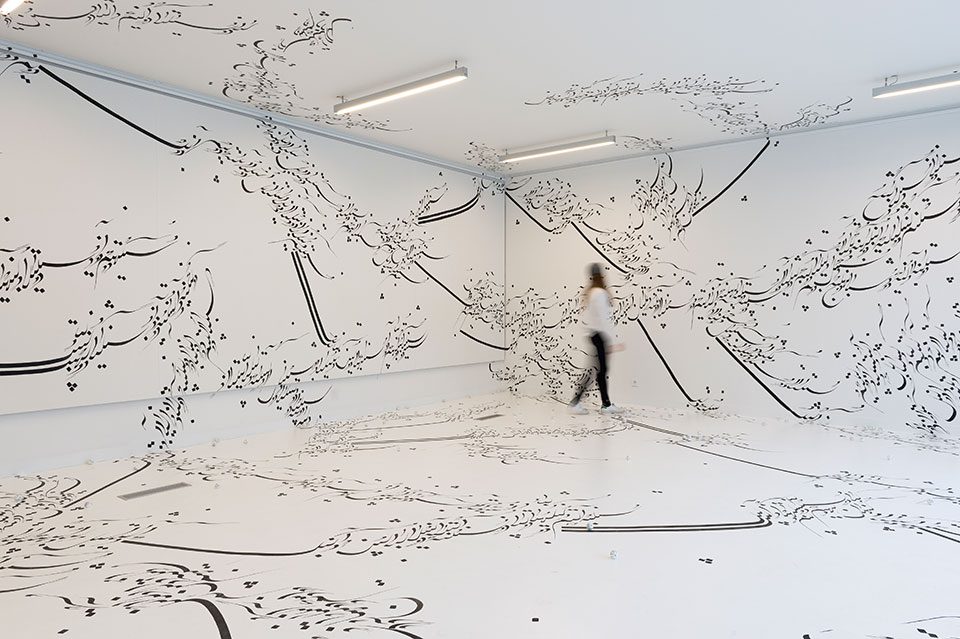 Lettres Ouvertes, ICI, Paris, 2017
Lettres Ouvertes, ICI, Paris, 2017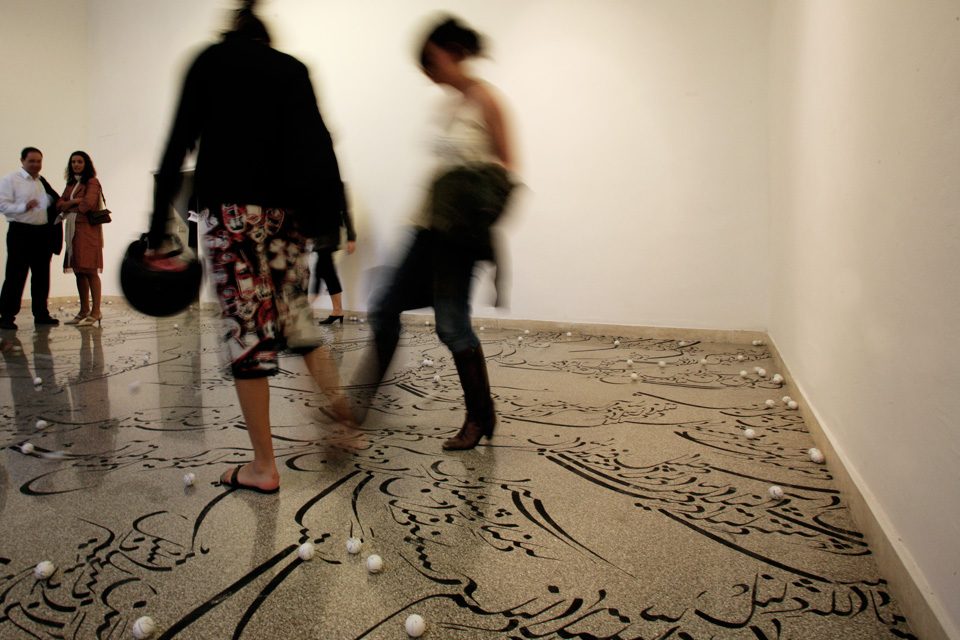
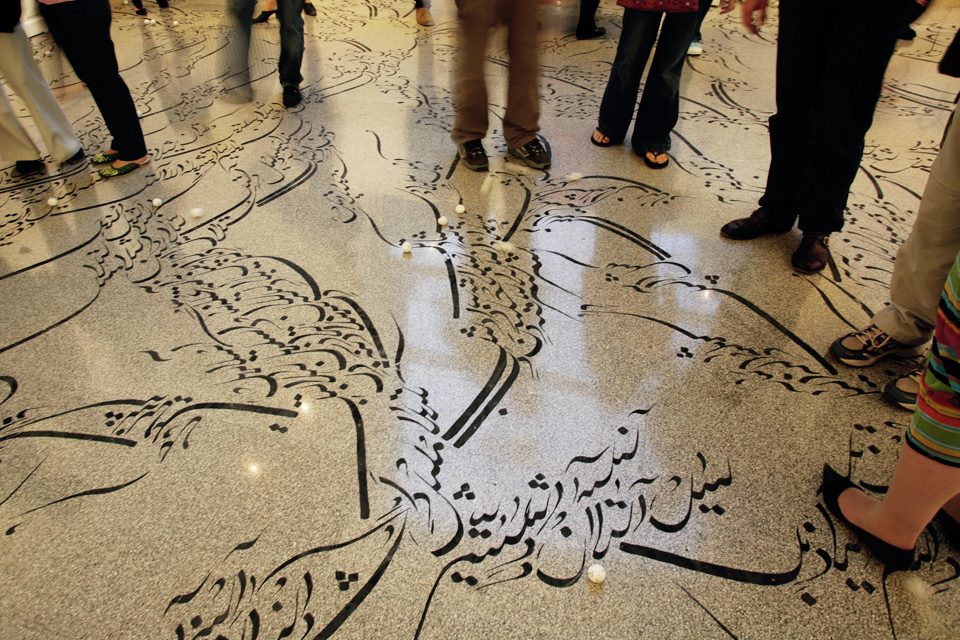
Villa Massimo, Rom, 2006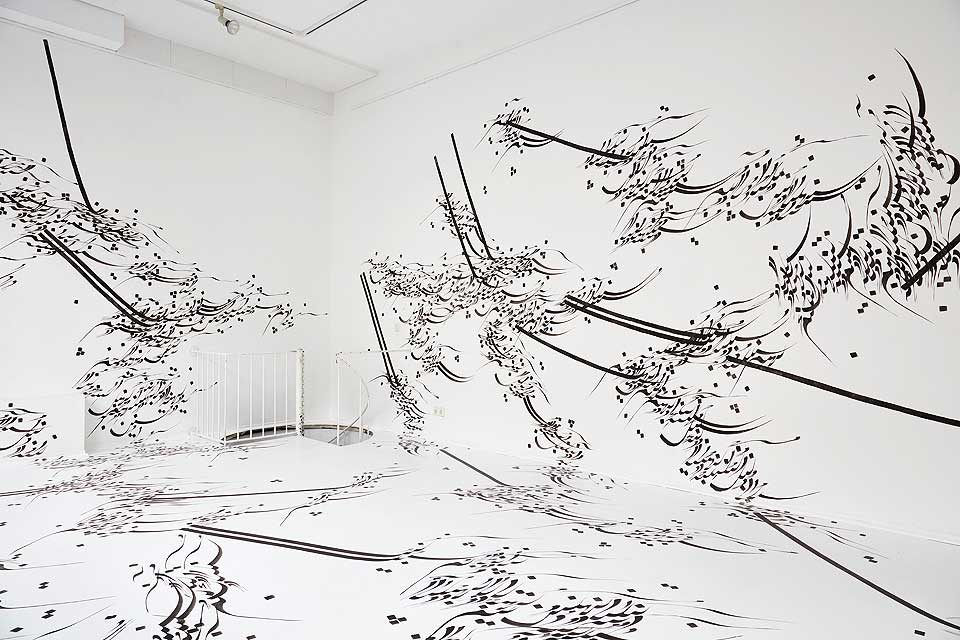
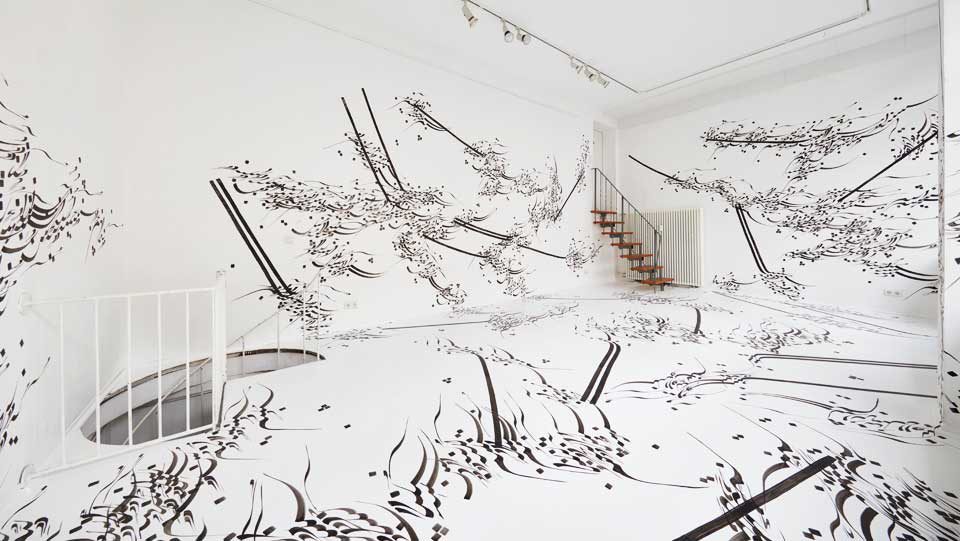
Werkbund, Frankfurt, 2019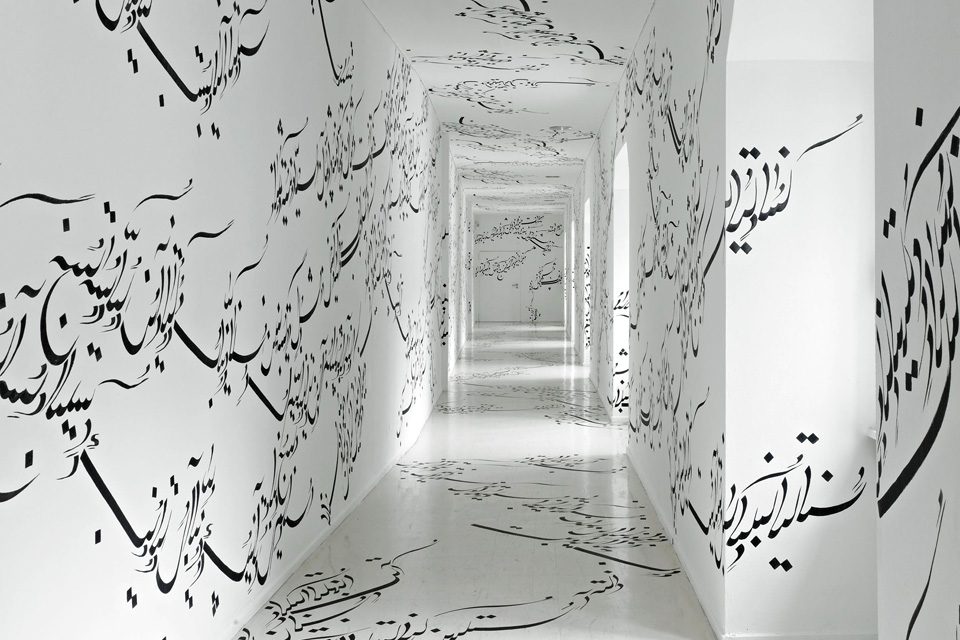
Ornamental Structures, Art Gallery of Saarbruecken, 2011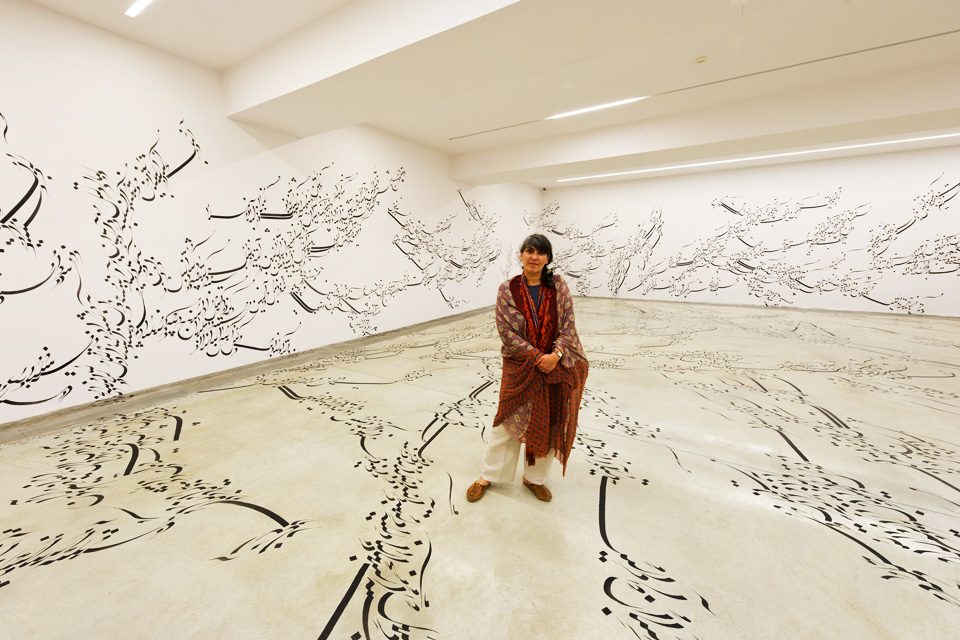
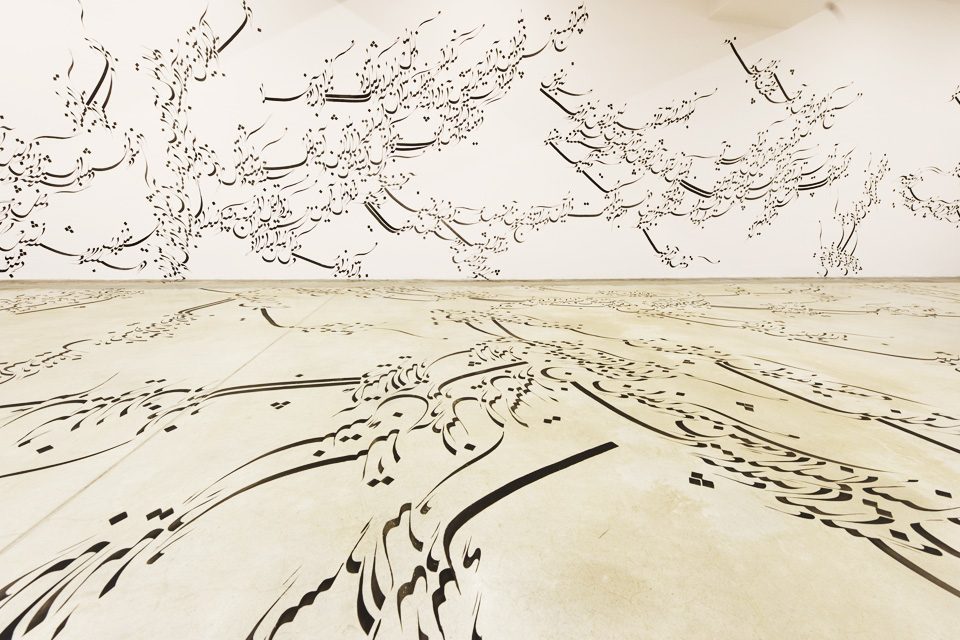
Fondazione Merz, Turino, 2011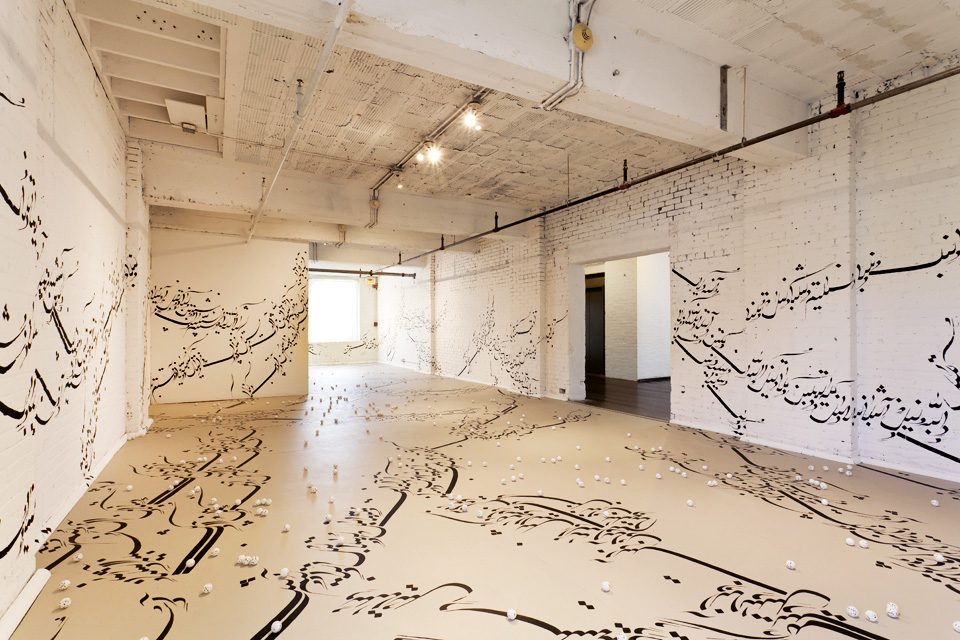
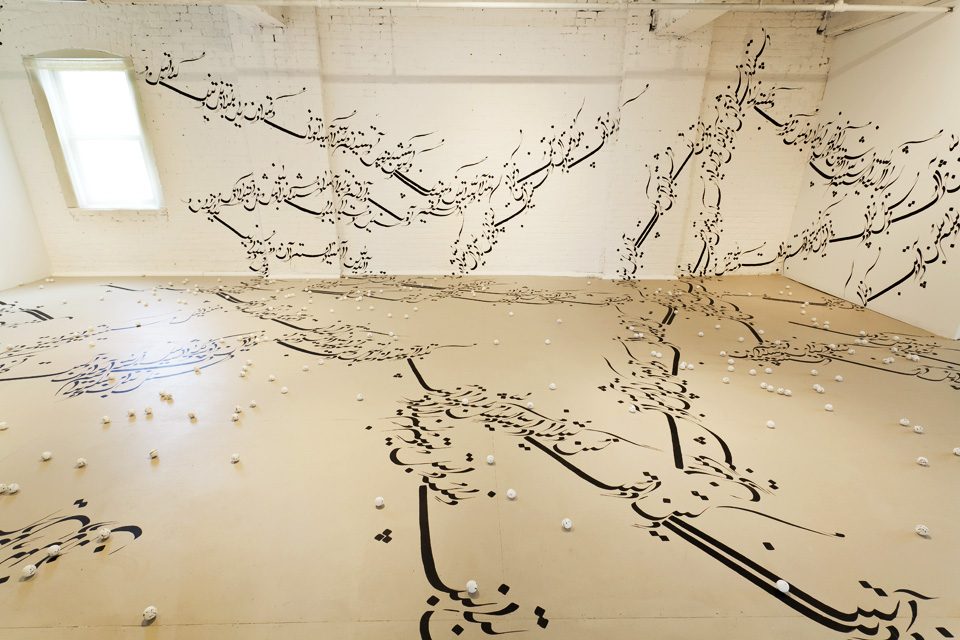
Feminist and …, The Mattress Factory Art Museum, Pittsburgh, 2012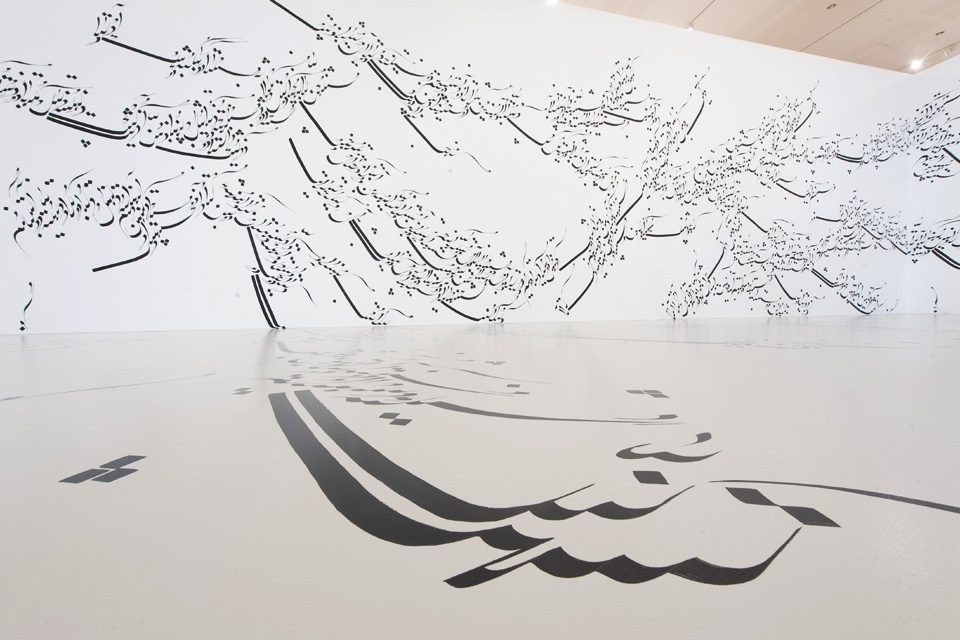
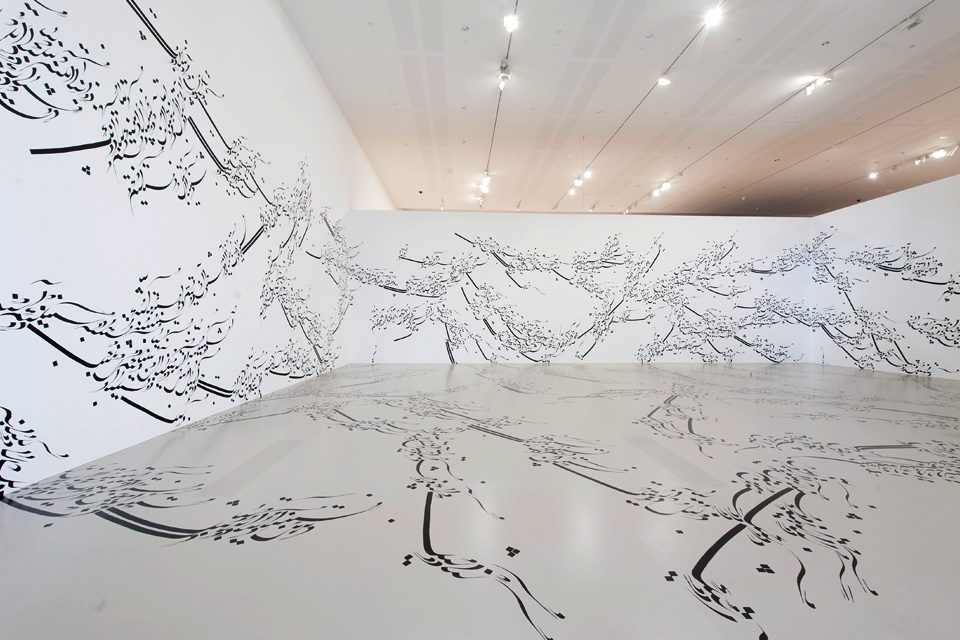
7th Asia Pasific Triennale of Contamporary Art, Queensland Art Gallery, Brisbane, 2012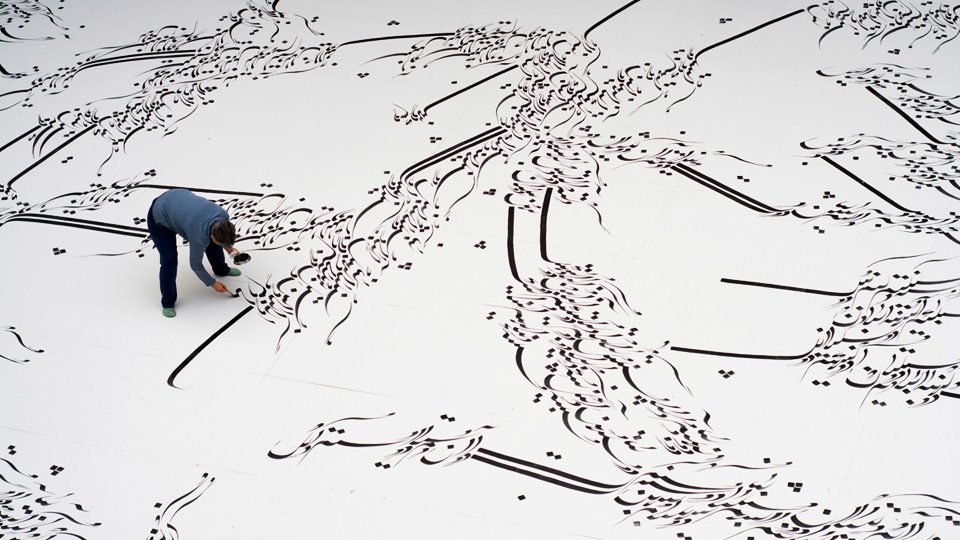
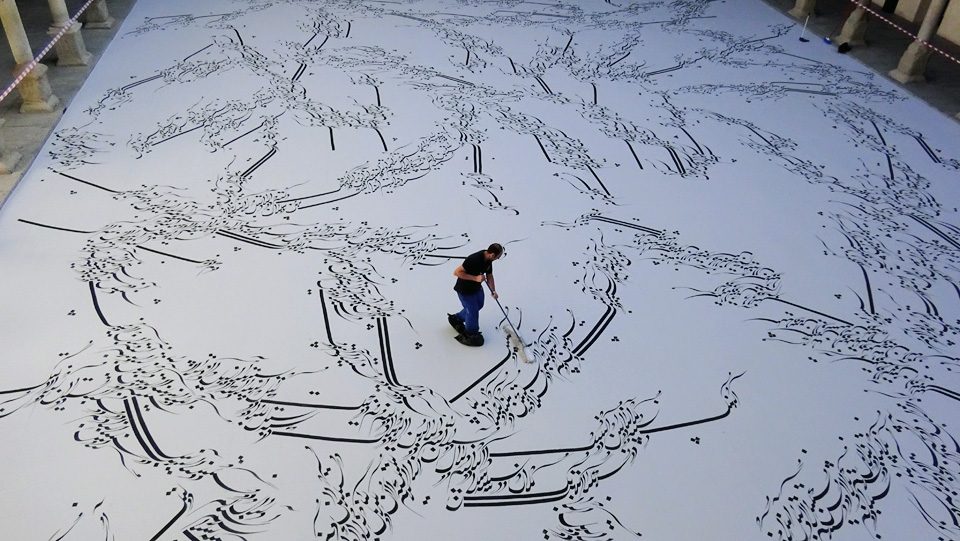
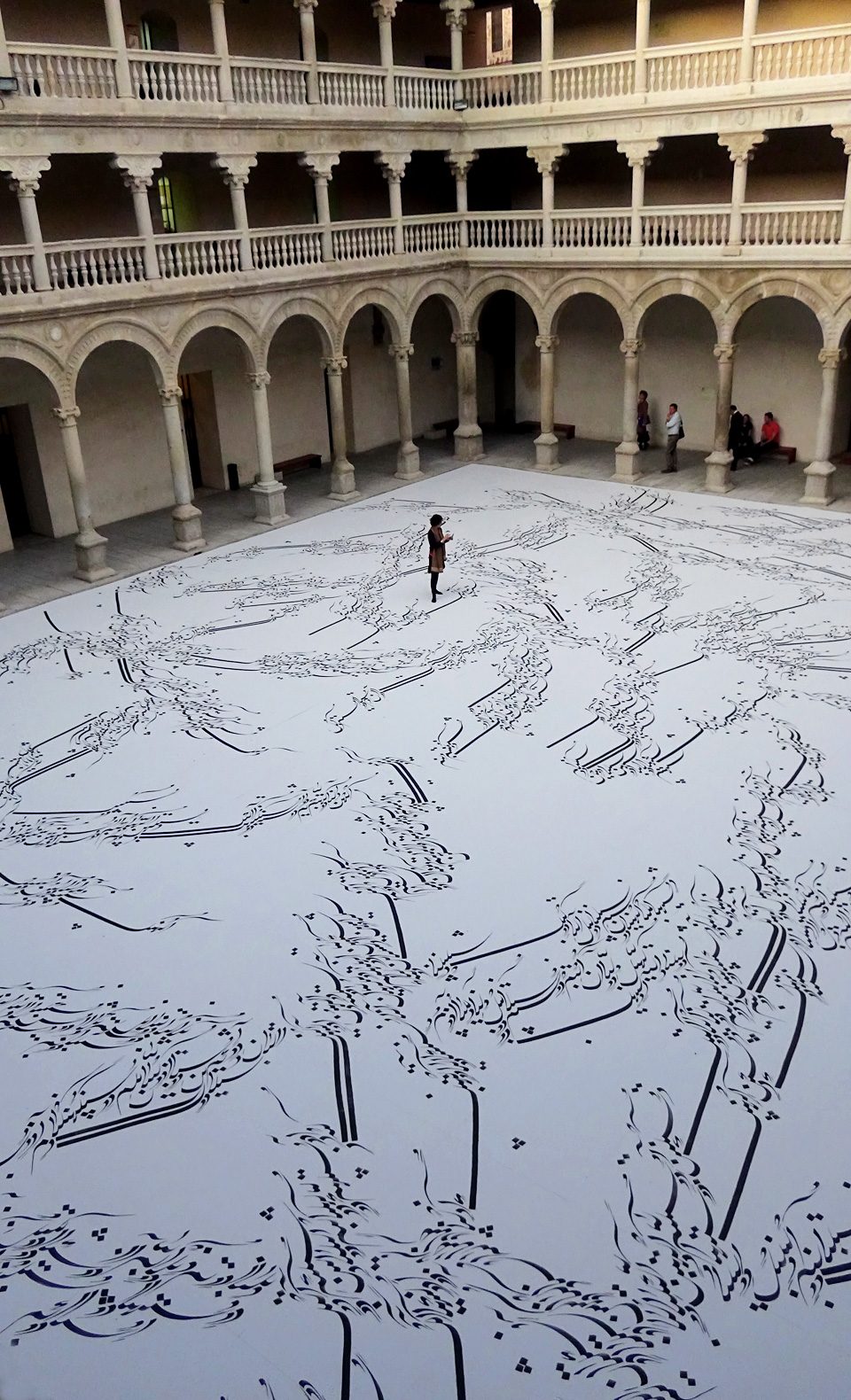
El Greco Year 2014, Universidad de Castilla La Mancha, Toledo, 2014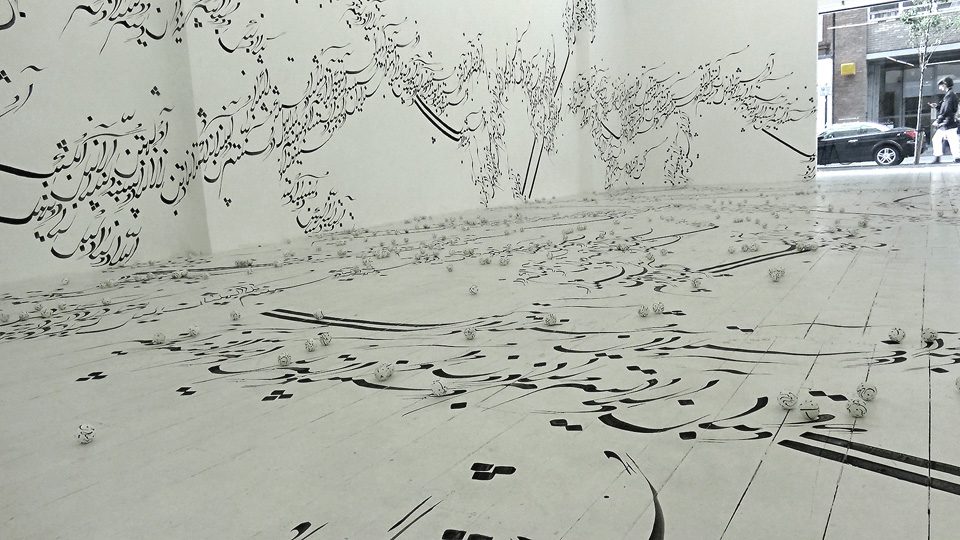
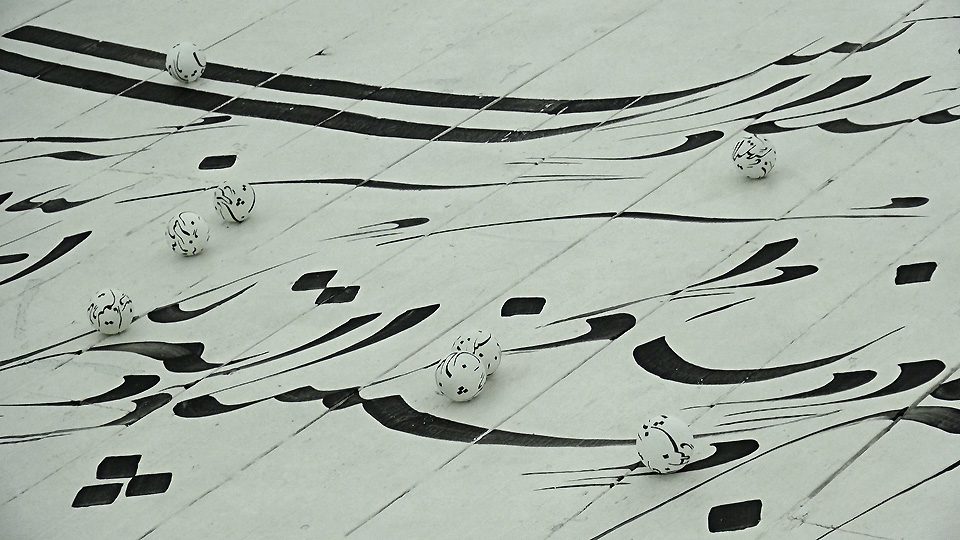
Pi Artworks London, 2016

